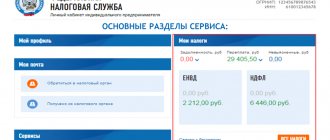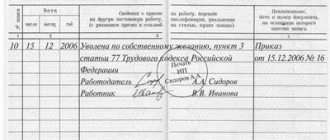When do unearned vacation pay appear?
The following example will help you understand the mechanism by which unearned vacation pay appears.
Technical University graduate P. N. Ptichkin got a job at a helicopter plant on July 1, 2019, and in January 2020 he received the right to go on vacation (paragraph 2 of Article 122 of the Labor Code of the Russian Federation) and took advantage of this opportunity. The duration of his vacation was 28 calendar days (Article 115 of the Labor Code of the Russian Federation).
Find out more about the provision of leave and its duration from the article “Annual paid leave under the Labor Code (nuances).”
During his vacation, he received a more lucrative job offer and immediately after returning from vacation, he quit the plant.
Thus, by the time of his dismissal, P.N. Ptichkin had earned only half of his legal leave: 14 days (6 months × 28 days / 12 months), and used all 28 days. There were 14 vacation days unworked at the time of dismissal (28 – 14).
Since the employee received the full amount of vacation pay before going on vacation, by the time of dismissal he had a debt to the company for the 14 days of vacation paid in advance.
IMPORTANT! The right to vacation for the first working year arises after six months of work in the organization (Article 122 of the Labor Code of the Russian Federation). Subsequent vacations are issued according to the approved schedule.
What the lack of a vacation schedule in a company can lead to, see the material “Unified Form No. T-7 - Vacation Schedule” .
How are amounts subject to withholding calculated?
The law does not determine the procedure for calculating workers' compensation funds, but usually everything is done like this:
- The accountant calculates how many months are left until the end of the year for which the vacation was used, from the moment the employee leaves the company.
- The resulting figure is multiplied by the number of rest days provided and divided by 12 months. This is how you find out the amount of vacation days taken in advance.
- Unworked vacation days are multiplied by the average daily earnings. The result obtained is the amount to be compensated.
Let's look at a specific example:
The employee was employed by the organization on 02/01/2016. He was granted leave from October 5, 2016. – 28 calendar days. While on vacation, he received a lucrative job offer and decided to resign by writing a statement. The employment contract was terminated on November 5, 2016. Average daily earnings – 1,000 rubles.
The number of months that he did not work before the end of the calendar year is four.
4 x 28/12 = 9 days of advance leave.
9 x 1,000 (SDZ) = 9,000 rub. – money that must be withheld upon final settlement.
If vacation pay were calculated not based on average daily earnings, but on average hourly earnings, unworked hours would be used in the calculation.
For example:
The company has a 40-hour work week with two days off.
The employee started the working year on January 1, 2016, and it would have ended only on April 30, 2017, but he quit on September 30, 2016, without working until the end of 7 months. Since the beginning of September, he was granted 28 days of leave. The average hourly salary of an employee is 100 rubles.
28x7/12 = 16 unworked rest days.
40 (hours in a workweek) x 16/7 (days) = 91 hours not worked.
91 x 100 (SCHZ) = 9100 – the amount of deductions from salary upon dismissal.
Holding order
The entire procedure for calculating upon dismissal looks like this:
- The employer receives a statement from the subordinate and decides on the need for two weeks of work.
- Draws up an order, fills out a work book and hands it over to the person resigning on the last day of work along with the salary calculation, having made a deduction in advance.
- If the employee was absent from the workplace on the day of termination of the employment relationship, money and documents are issued no later than the day following the date of presentation of the demands (Article 140 of the Labor Code of the Russian Federation).
- When calculating the amount of compensation, restrictions are taken into account - no more than 20%.
Example:
The employee’s salary is 20,000 rubles, and the amount of deductions is 12,000 rubles.
20,000 x 20% = 4,000 rub. – the amount that the director has the right to withhold. The employee can compensate the remaining part voluntarily.
"Vacation" rights and obligations
Upon termination of the employment relationship, the employer must perform many mandatory actions regulated by labor legislation. Among them is the obligation to give the employee everything he earned by the time of dismissal.
Vacation payments are one of the elements of the final settlement with a resigning employee. Their composition depends on how many vacation days have been accumulated and whether the employee has exercised his right to vacation in the current period (Article 127 of the Labor Code of the Russian Federation).
For information on the circumstances affecting the calculation of vacation days upon termination of an employment contract, see the material “How to calculate the number of vacation days upon dismissal?” .
In addition to this obligation, the employer has the right to withhold from the resigning employee’s income the amount of advance vacation pay (Article 137 of the Labor Code of the Russian Federation).
This right may not be exercised in all cases. If the dismissal of an employee occurs on the grounds listed in Art. 137 of the Labor Code of the Russian Federation, it will not be possible to withhold overpaid vacation pay from him. For example, such a prohibition on retention applies to the situation of dismissal due to staff reduction or closure of a company, as well as in other cases provided for by law.
Find out how the latest judicial practice on this issue is shaping up from the analytical collection from ConsultantPlus. Get trial access to the system and access the material for free.
In addition, the employer can deal with the employee’s debt in a different way. We'll talk about this in the next section.
Find out how to calculate the number of vacation days in 2020 from this publication.
When is salary deduction prohibited?
In accordance with Art. 137 of the Labor Code of the Russian Federation, upon dismissal from an employee’s salary, overpaid vacation pay can be withheld, while the employer does not need his written or oral consent. If these are unworked vacation days, the employer has the right to withhold.
At the same time, the legislation stipulates several grounds when deduction is impossible, even if the employee has not worked vacation days:
- If the employee refuses to be transferred to another job, which is necessary for him in accordance with the medical report (clause 8, part 1, article 77 of the Labor Code of the Russian Federation). If an employment contract is terminated on this basis, the employer does not have the right to withhold unworked vacation days.
- In case of liquidation of the organization (clause 1, part 1, article 81 of the Labor Code of the Russian Federation).
- In a situation of staff reduction (clause 2, part 1, article 81 of the Labor Code of the Russian Federation).
- When changing the owner of the organization's property - only in relation to the head of the organization, his deputies and the chief accountant (clause 4, part 1, article 81 of the Labor Code of the Russian Federation).
- In the event of an employee being called up for military service (clause 1 of Article 83 of the Labor Code of the Russian Federation).
- When reinstating an employee who previously performed this work, by decision of the state labor inspectorate or court (clause 2 of article 83 of the Labor Code of the Russian Federation).
Extraordinary circumstances arise for the following reasons:
- if the employee is declared completely incapable of working in accordance with a medical report (clause 5 of Article 83 of the Labor Code of the Russian Federation);
- in the event of the death of an employee or employer - an individual, as well as in the event that a court recognizes an employee or employer - an individual as deceased or missing (clause 6 of Article 83 of the Labor Code of the Russian Federation);
- in the event of emergency circumstances that prevent the continuation of labor relations (clause 7 of article 83 of the Labor Code of the Russian Federation).
Is it possible to do without deductions?
You can avoid deductions by signing a debt forgiveness agreement. Forgiving an employee’s debt means not raising the issue of the existence of a debt and not demanding its repayment.
In everyday life, settling a debt between individuals through forgiveness does not entail any consequences for both parties to the transaction. In a situation where one of the parties is a legal entity, debt forgiveness entails additional paperwork and also requires adjustment of tax obligations.
At the beginning of the procedure for forgiveness of vacation debt, you will need to draw up a document that reflects the will of the parties to repay the debt. Such a document may be an agreement on debt forgiveness for vacation overpayment.
The preparation of such a document is similar to similar agreements drawn up in the normal course of business. After the title of the document, the date and place of its preparation are indicated, followed by the parties to the agreement and its main text. It may contain the following content:
“...The employer exempts the employee from repaying the debt for 14 unworked vacation days in the amount of 10,025 (ten thousand twenty-five) rubles, which arose in connection with his dismissal under clause 3, part 1, art. 77 of the Labor Code of the Russian Federation until the end of the working year, towards which he used annual paid leave...”
The final elements of the agreement are the details and signatures of the parties.
Read about the next steps of debt forgiveness for unearned vacation pay in the next section.
What is it and how are deductions made?
Labor legislation establishes the financial liability of workers and employers in certain cases. The issue of withholding a certain percentage of wages is separately regulated.
In accordance with Part 2 of Art.
137 of the Labor Code of the Russian Federation, an organization has the right to make a monetary deduction if an employee quits at the end of the working year during which he went on vacation.
That is, the situation when, upon termination of the contract, an employee receives less than the amount he expected, is quite legal.
An employer, dismissing an employee who was on leave “in advance”, thus has the right:
- recover the amount of leave by deducting wages;
- agree with the employee that he will repay the debt voluntarily;
- forgive an employee's debt.
If the amount of debt is small, then employers use the first option.
Important! In accordance with Art. 138 of the Labor Code of the Russian Federation, no more than 20% can be recovered from wages. At the same time, the management of the organization has the right to act without the permission of the dismissed employee.
How to calculate correctly?
Before making a deduction, the accounting department must establish the exact amount of the debt.
- The number of unworked days is calculated.
The formula used for this is:
Unworked vacation = Total. – (Otpyear / 12 x Months of work)
Where:
- Total - the total number of vacation days for the entire time the employee worked in the organization;
- Otpgod – the number of vacation days due to an employee in one working year;
- 12 – number of months in a year;
- months of work - the total number of months that the employee worked in the organization.
The month in which the employee quits is taken into account only if the employment contract is terminated in the second half. In this case, the law allows it to be rounded to a whole period.
The resulting number of unworked days is rounded to a whole number, but only in favor of the employee, and not according to mathematical rules (Letter of the Ministry of Health and Social Development of the Russian Federation dated December 7, 2005 No. 4334-17).
For example, let’s take A.N. Romashkina, who was on vacation with an advance payment, and some time after returning to work she decided to quit.
During the entire period of work, she spent 140 days on vacation. In her year, in accordance with Art. 115 of the Labor Code of the Russian Federation, she is entitled to 28 days. She worked in the organization for only 55 months.
Thus:
140 – (28 / 12 x 55) = 11.6 days of vacation.
Since the law allows such numbers to be rounded to whole numbers in favor of the employee, Romashkina took 11 days off “in advance.”
- Unworked vacation amount.
It is calculated using the formula:
Amount = Number of days not worked x Salary average.d.
Average daily earnings also need to be calculated as follows:
ZPsr.d. = Salary amount for 12 months / 12 / 29.3.
The coefficient of 29.3 is established by Decree of the Government of the Russian Federation No. 642.
Let's turn again to employee A.N. Romashkina. Her average daily earnings are 758 rubles 56 kopecks. Thus, the unworked vacation amount is equal to:
11 x 758.56 = 8,344 rubles 16 kopecks.
Once the exact amount of debt is determined, deductions are made.
From the salary, as mentioned above, you can deduct no more than 20%.
Romashkina A.N. accrued as the remaining salary 21,500 rubles 80 kopecks. 20% of this amount is 4,300 rubles 16 kopecks. It is this amount that the employer can recover from the employee if she does not voluntarily agree to pay the entire debt.
Thus, as the remaining salary upon dismissal, she will receive:
21,500.8 – 4,300.16 = 17,200 rubles 64 kopecks.
When can deductions not be made?
The employer cannot always recover the amount of advance rest , and these grounds are listed in Art. 137 Labor Code of the Russian Federation:
- if the employee was dismissed due to refusal to transfer to a position more suitable for him due to health reasons;
if the organization is liquidated;
- if an employee is laid off;
- if the manager, his deputy or chief accountant were dismissed due to a change of owner;
- if the employee was drafted into the army;
- if he was dismissed due to the fact that a previously dismissed employee was reinstated to his position by a court decision or labor inspectorate;
- if the employee was dismissed due to total disability;
- if an emergency situation occurred that served to terminate the employment relationship.
In other cases, the organization’s management has the right to collect an advance amount of no more than 20% of the salary or try to negotiate with the employee so that he pays the entire amount voluntarily.
Tax nuances of vacation advance forgiveness
The debt forgiveness agreement signed by the parties automatically triggers the tax adjustments associated with this event.
For the employee, recalculation of tax obligations does not lead to material losses - the tax on his income in the form of a forgiven debt has already been withheld when he was paid vacation pay. Changing the status of the amount received from vacation pay to a bonus from the employer (debt forgiveness) does not have an impact on personal income tax obligations.
What to do with personal income tax if an employee voluntarily repays the debt on advance vacation pay, see the material “Personal income tax on unearned vacation pay is subject to return .
The employer's situation is different. In connection with the “act of goodwill” in relation to the employee, the income tax will have to be recalculated. In this case, it becomes necessary to exclude from expenses the amount of unearned vacation pay (clause 1 of Article 252, clause 49 of Article 270 of the Tax Code of the Russian Federation). Tax officials consider such expenses to be economically unjustified (letter from the Federal Tax Service for the city of Moscow dated June 30, 2008 No. 20-12/061148).
With regard to the amount of unearned vacation insurance premiums accrued, it should be noted that there are no grounds for their recalculation - they were accrued within the framework of the labor relationship. The legality of their inclusion in tax expenses is not disputed by officials of the Ministry of Finance (letter dated April 23, 2010 No. 03-03-05/85).
Methodology for calculating advance vacation pay
If the employer is not inclined to be generous and forgive the employee unearned amounts, the accounting department will have to work hard. The algorithm for their calculation includes the following steps:
- determining the number of unworked vacation days;
- clarification of information about average daily earnings;
- calculation of the amount of advance vacation pay.
Determine the number of days of unworked vacation. For calculation we use the formula:
KDno = KDio – [KD o / 12 months. × KM],
Where:
KDno and KDio - the number of vacation days, unworked and used, respectively;
KD o - duration of the next vacation;
KM - the number of months of work at this enterprise.
For example, during his work, an employee of the company did not use part of his vacations in full, but in the working year before his dismissal, his vacation was in full accordance with the vacation schedule. As a result, at the time of his dismissal, he had “two-way” vacation pay: not paid off for the previous period (15 days) and advance pay for the unfinished current year (10 days). In this situation, the employer, instead of deducting for unworked vacation days, is obliged to give the employee compensation for unused days.
If the employee had not had incompletely used vacations in previous periods, then, based on the results of this calculation stage, the number of unworked vacation days would be 10, and to calculate advance vacation pay, the accountant would have to proceed to the next step of the calculation algorithm.
We clarify information about earnings and calculate unearned vacation pay.
This stage is associated not only with calculations, but also with clarifying the available information. The accountant will have to provide information about the average daily earnings, based on which the employee was paid for vacation days. This indicator has already been calculated earlier (before the employee went on vacation).
The amount of vacation pay for the unworked vacation period (∑Ond) is calculated based on the number of days of unworked vacation (KDno) and average daily earnings (AS) according to the formula:
∑Ond = KDno× SZ.
Additional adjustments will be needed if, during the employee’s rest period, all employees of the company received a salary increase. The date of this event is of particular importance - the vacation period is calculated from it, the payment for which will have to be adjusted by an increasing factor.
The sequence of actions in this situation is as follows: unworked days are counted from the end date of the vacation, and it is determined how many days fall in the time period after the salary increase (and how many before this event). The average daily earnings for these periods will be different due to the application of the adjustment factor.
The amount of unearned vacation pay will be calculated using a complicated formula:
∑Ond = KD0× SZ0 + KD1× SZ1,
Where:
KD0 and KD1 - unworked vacation days before and after the salary increase;
SZ0 and SZ1 are the average daily earnings, calculated for vacation pay and increased by a factor, respectively.
What to do if an employee decides to resign of his own free will during his next vacation? How to make a payment upon dismissal? Is it possible to withhold paid vacation pay? The answers to these and other questions are considered in detail by ConsultantPlus experts. Get trial access to the system and study the ready-made solution for free.
Unworked vacation days
As you know, after six months of continuous work with one employer, an employee has the right to receive vacation for the first year of work.
But by agreement of the parties, leave can be granted earlier. And for the second and subsequent years, vacation is due at any time of the working year in accordance with the vacation schedule (parts 2, 4, article 122, parts 1, 2, article 123 of the Labor Code of the Russian Federation). If an employee, on the date of dismissal, used more days of paid vacation than he was entitled to in the current working year, then it turns out that the employer paid for unused vacation days. Therefore, he has the right to withhold vacation pay for unworked days from payments to the employee upon dismissal.
As a general rule, withholdings cannot exceed 20 percent of the after-tax amount payable. If the overpayment for vacation exceeds this limit, the employee returns the excess voluntarily. The employer will not be able to collect this debt in court.
Example of calculating advance holiday pay
The manager of Breeze LLC, R. N. Gavrilov, is resigning, having used the standard vacation duration (28 days) this year. At the time of the severance of the employment relationship with the employee, the accountant of Breeze LLC had the following information:
- number of vacation days received in advance from the employer - 12;
- Average daily earnings for calculating vacation pay are 1,120 rubles.
Additional terms:
- while the employee was on vacation, the company increased salaries - the increase occurred on May 20 and affected the entire work team;
- R.N. Gavrilov’s vacation ended on May 30;
- the employee’s salary before and after the increase was 25,000 and 28,000 rubles. respectively.
The accounting specialist began the calculation by determining the unworked vacation days falling during the period after the salary increase. Of the 12 advanced vacation days, the period after the increase accounted for 11 days (from May 20 to 30); unworked rest days, paid without taking into account the increasing factor, accounted for 1 day (12 - 11).
The accountant made the following calculation using the formula from the previous section:
∑Ond = 1 day × 1,120 rub. + 11 days × [RUB 1,120 × (28,000 rub. / 25,000 rub.)] = 14,918.40 rub.
At the time of R.N. Gavrilov’s dismissal, this amount amounted to his debt to the employer as received, but not worked out.
We will tell you in the next section how much of this debt will be returned to the employer.
For information about how leave policies may change, see here.
Deduction for used vacation upon dismissal
The amount of vacation pay not worked by the employee and the amount that can be withheld from his income obtained as a result of the calculation do not always coincide.
IMPORTANT! The amount of deductions is limited by law (Article 138 of the Labor Code of the Russian Federation) and amounts to 20% of the income received by the employee. In some cases, it is allowed to exceed the established limit to an amount not exceeding half of the income received.
It should be taken into account that in addition to advance vacation pay, the employee may have other obligations (under writs of execution, in connection with compensation for damage, etc.). Then they, together with advance vacation pay, should not exceed the specified limit on the amount of deduction.
The accountant needs to find out what part of the calculated amount of unearned vacation pay can be deducted from the employee’s income. If he has no other deductions, and the amount of vacation pay received in advance is less than 1/5 of the amount received upon dismissal, no problems arise - the advanced vacation pay can be withheld in full.
If established by Art. 138 of the Labor Code of the Russian Federation, the restriction does not allow the employer to reimburse the full specified amount, you can try to do the following:
- ask the employee to voluntarily repay the remaining balance of the debt;
- apply to the judicial authorities to resolve the issue of collection (Articles 382-383 of the Labor Code of the Russian Federation);
- forgive the balance of the debt.
Each of these methods has its own nuances. For example, voluntary repayment of debt entails recalculation of personal income tax, and forgiveness of debt leads to adjustment of income tax obligations.
The judicial way of resolving the issue, as practice shows, is not always in favor of the employer. For example, in the appeal ruling of the Supreme Court of the Republic of Karelia dated January 11, 2013 No. 33-111/2013, the court defended the interests of the employer, and in the ruling of the Presidium of the Rostov Regional Court dated September 15, 2011 No. 44g-109 on a similar issue, the opposite point of view was expressed.
Find out what the Labor Code of the Russian Federation establishes regarding deductions from wages from this article.
Results
Deduction for unworked vacation upon dismissal is made from the final payment amounts received by the employee. In certain legally established cases, such deductions are not permitted or limited.
Sources:
- Tax Code of the Russian Federation
- Labor Code of the Russian Federation
You can find more complete information on the topic in ConsultantPlus. Full and free access to the system for 2 days.
Withholding personal income tax upon dismissal
There is no special rule in the Tax Code for determining the tax base for personal income tax if previously accrued vacation pay, on which tax has already been paid, is subsequently withheld from payments upon dismissal. Therefore, there are different opinions on how the employer (tax agent for personal income tax) should act. He can:
- reduce the tax base for personal income tax by the amount of vacation pay for unworked vacation days. Then he will have an overpayment of personal income tax;
- do not reduce the tax base for personal income tax, since deductions are made from amounts paid minus personal income tax.
In a normal situation, when payments exceed the amount of withholding, it is easier for the employer not to reflect the debt to the employee for the return of personal income tax, but to immediately calculate the tax on the amount of payments taking into account the withholding.










